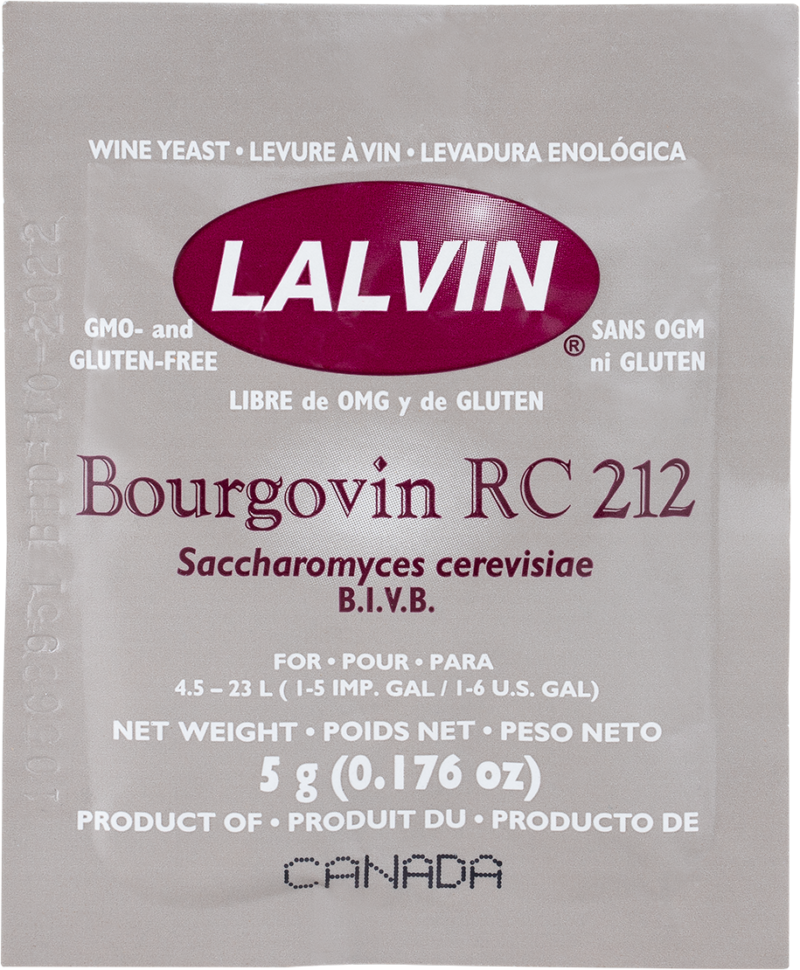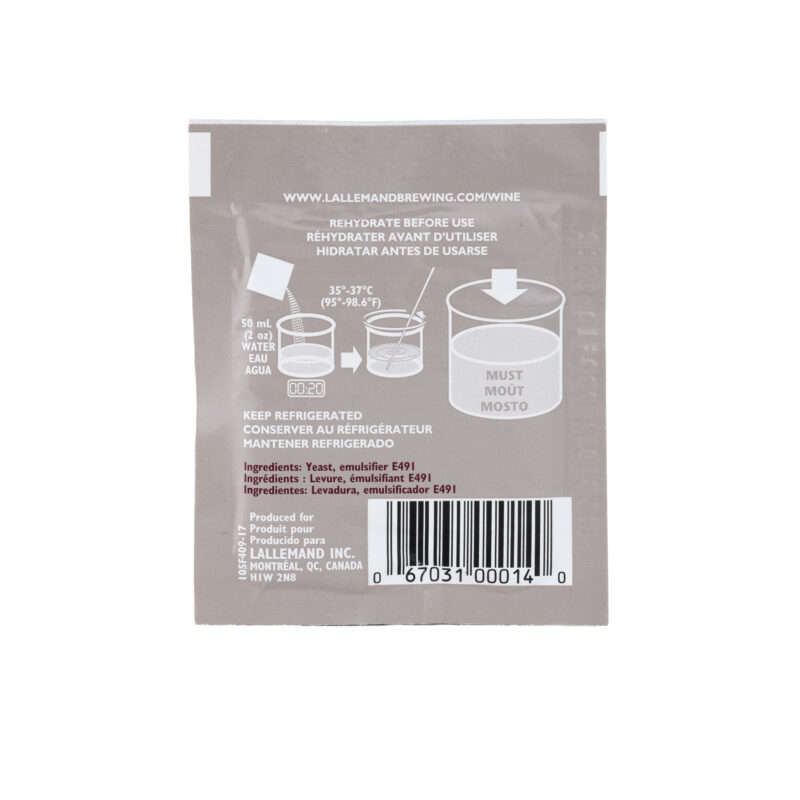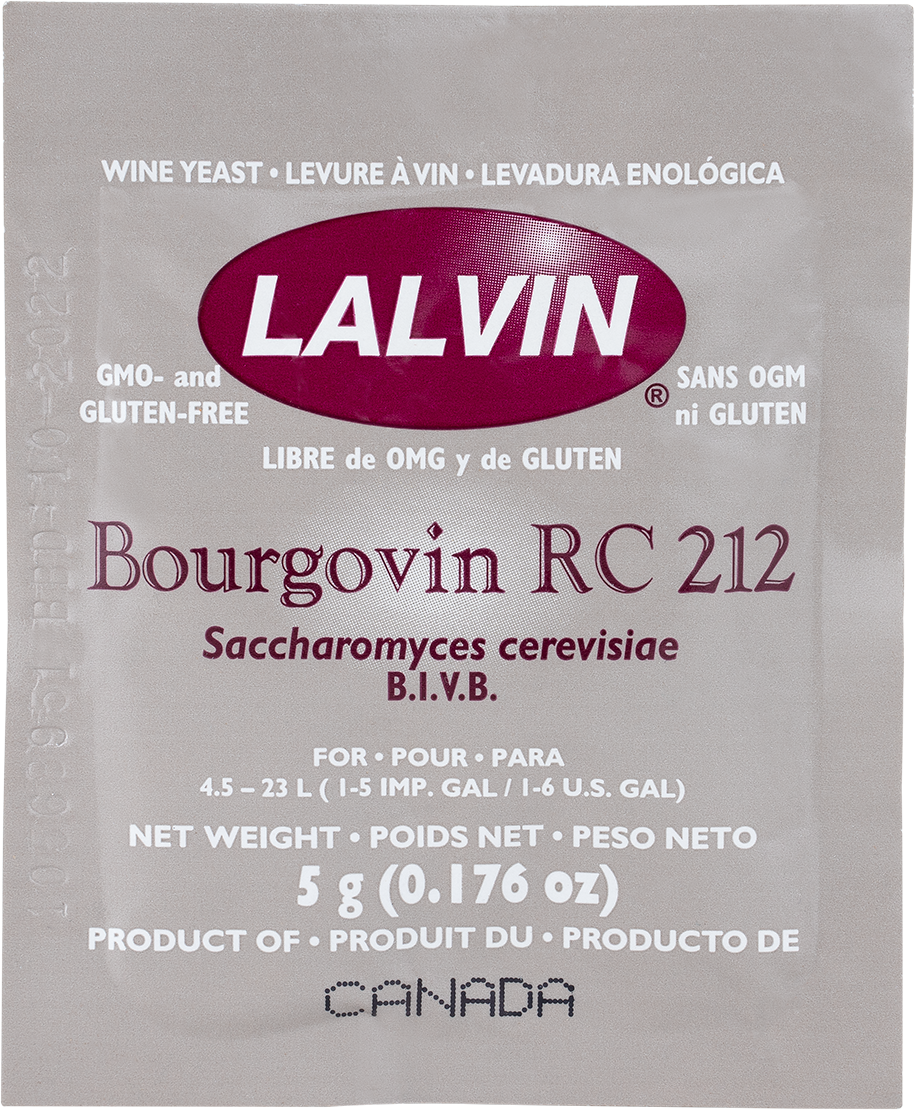
Lalvin Bourgovin RC212™
Lalvin Bourgovin RC212™ has been isolated in the Burgundy region of France, by the Bureau Interprofessionel des Vins de Bourgogne (BIVB) for its ability to highlight the Pinot Noir grape variety qualitative potential, especially in regards to the polyphenols. Indeed, thanks to its limited cell wall polyphenol absorption, Lalvin Bourgovin RC212™ promotes color and tannin stabilization during fermentation. This specific property makes Lalvin Bourgovin RC212™ a perfect choice to ferment grape varieties such as Pinot Noir, Grenache and Zinfandel with delicate structure, ripe cherry, bright fruity and spicy character.
Benefits
- GRAPE VARIETY PAIRING: Pinot noir, Grenache and Zinfandel
- WINE STYLES: For delicate and elegant red wines (supports color and structure)
- AROMA: Ripe cherry, bright fruity and spicy characteristics.
- ALCOHOL TOLERANCE: Up to 16%
- FERMENTATION RANGE: 18-30°C (64-86°F)
- INOCULATION RATE: 0.2-0.4g/L


